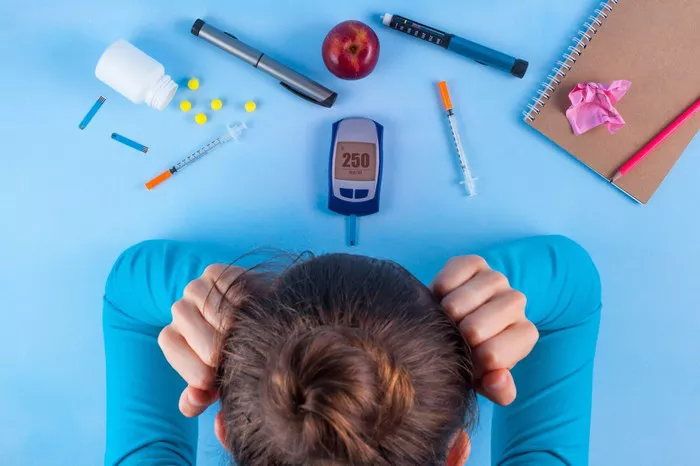The Basics of Blood Sugar Regulation
Before exploring the symptoms, it’s essential to understand how blood sugar regulation works in the body. The pancreas produces insulin, a hormone that facilitates the uptake of glucose from the bloodstream into cells, where it is used for energy. In type 2 diabetes, cells become resistant to insulin’s effects, and the pancreas struggles to produce sufficient insulin to overcome this resistance. As a result, glucose accumulates in the blood, leading to hyperglycemia.
Common Symptoms of High Blood Sugar
1. Frequent Urination (Polyuria)
One of the hallmark symptoms of high blood sugar is frequent urination, medically termed polyuria. When blood glucose levels are excessively high, the kidneys attempt to excrete the excess glucose through urine. This increased urine production can lead to dehydration, further complicating the patient’s condition.
2. Excessive Thirst (Polydipsia)
Closely related to polyuria is polydipsia, or excessive thirst. As the body loses more water through frequent urination, it triggers an intense sensation of thirst. Patients with high blood sugar often find themselves drinking more fluids to compensate for the fluid loss, yet the thirst persists.
3. Extreme Hunger (Polyphagia)
Despite having high levels of glucose in the blood, individuals with type 2 diabetes may experience extreme hunger, known as polyphagia. This paradox occurs because the body’s cells are unable to effectively use glucose for energy. As a result, the body signals a need for more food, hoping to obtain the necessary energy.
4. Fatigue and Weakness
Chronic fatigue and weakness are common complaints among those with high blood sugar. When cells cannot access glucose for energy, the body feels tired and sluggish. This lack of energy can affect daily activities, making it challenging for patients to maintain their usual routines.
5. Blurred Vision
High blood sugar levels can affect the eyes, leading to blurred vision. The lenses of the eyes swell due to changes in blood sugar, altering their ability to focus properly. While this symptom can be temporary, persistent hyperglycemia can cause long-term damage to the eyes and potentially lead to diabetic retinopathy.
6. Slow-Healing Wounds
Elevated blood sugar impairs the body’s ability to heal wounds effectively. High glucose levels can damage blood vessels and nerves, reducing blood flow to the affected areas. This compromised circulation makes it difficult for the body to deliver the necessary nutrients and immune cells to heal wounds, resulting in slow healing.
7. Frequent Infections
Individuals with high blood sugar are more susceptible to infections. Hyperglycemia weakens the immune system, making it less effective at combating pathogens. Common infections include urinary tract infections, skin infections, and yeast infections. The high glucose environment also provides an ideal breeding ground for bacteria and fungi.
8. Unexplained Weight Loss
Unexpected weight loss can occur in individuals with type 2 diabetes, despite increased appetite and food intake. When the body cannot utilize glucose for energy, it begins to break down muscle and fat stores to compensate. This catabolic state leads to weight loss and muscle wasting, further exacerbating the patient’s weakness and fatigue.
9. Tingling and Numbness
High blood sugar can cause nerve damage, resulting in a condition called diabetic neuropathy. Symptoms of neuropathy include tingling, numbness, and a burning sensation, typically in the hands and feet. This nerve damage can progress to more severe complications if blood sugar levels are not managed effectively.
10. Dry Mouth and Skin
Hyperglycemia can lead to dehydration, causing symptoms such as dry mouth and dry, itchy skin. Reduced moisture levels in the skin increase the risk of cracks and infections. Additionally, high blood sugar can affect the salivary glands, leading to a persistent dry mouth, which can contribute to dental problems and gum disease.
The Impact of High Blood Sugar on Organs and Systems
Beyond the immediate symptoms, chronic high blood sugar can have severe long-term effects on various organs and systems in the body.
Cardiovascular System
Prolonged hyperglycemia increases the risk of cardiovascular diseases, including heart disease and stroke. High blood sugar damages blood vessels and promotes the formation of fatty deposits, leading to atherosclerosis. This condition narrows and hardens the arteries, reducing blood flow and increasing the likelihood of heart attacks and strokes.
Kidneys
The kidneys are particularly vulnerable to damage from high blood sugar. Diabetic nephropathy, a type of kidney disease, can develop over time, leading to impaired kidney function and potentially kidney failure. Early detection and management of blood sugar levels are crucial to prevent or slow the progression of kidney damage.
Nervous System
As mentioned earlier, high blood sugar can cause diabetic neuropathy, affecting the peripheral nerves. Additionally, it can impact the autonomic nervous system, which controls involuntary bodily functions such as heart rate, digestion, and bladder control. Autonomic neuropathy can lead to complications like gastroparesis (delayed stomach emptying) and orthostatic hypotension (a drop in blood pressure upon standing).
Eyes
Chronic hyperglycemia can lead to various eye conditions, including diabetic retinopathy, cataracts, and glaucoma. Diabetic retinopathy is a leading cause of blindness in adults, resulting from damage to the blood vessels in the retina. Regular eye exams and blood sugar control are essential to prevent or manage these complications.
Skin
High blood sugar can lead to various skin conditions, including bacterial and fungal infections, itching, and diabetic dermopathy (brown patches on the skin). Proper skin care and blood sugar management can help mitigate these issues.
Psychological Impact of High Blood Sugar
The symptoms and complications of high blood sugar can also take a toll on a patient’s mental health. Chronic fatigue, pain from neuropathy, and the stress of managing a chronic condition can lead to anxiety, depression, and a reduced quality of life. It’s essential for healthcare providers to address the psychological aspects of diabetes care and offer support to patients struggling with these challenges.
Monitoring and Managing High Blood Sugar
Effective management of high blood sugar involves a combination of lifestyle changes, medication, and regular monitoring.
Lifestyle Changes
- Diet: A balanced diet low in refined sugars and high in fiber can help regulate blood sugar levels. Patients should focus on consuming whole grains, lean proteins, healthy fats, and plenty of vegetables.
- Exercise: Regular physical activity improves insulin sensitivity and helps lower blood sugar levels. Patients should aim for at least 150 minutes of moderate-intensity exercise per week.
- Weight Management: Maintaining a healthy weight can significantly improve blood sugar control and reduce the risk of complications.
Medications
Several medications are available to help manage blood sugar levels in type 2 diabetes. These include:
- Metformin: Often the first-line treatment, metformin reduces glucose production in the liver and improves insulin sensitivity.
- Sulfonylureas: These drugs stimulate the pancreas to produce more insulin.
- DPP-4 Inhibitors: These medications increase insulin release and decrease glucagon levels.
- GLP-1 Receptor Agonists: These drugs enhance insulin secretion and promote satiety, helping with weight loss.
- SGLT2 Inhibitors: These medications increase glucose excretion through urine.
Monitoring
Regular monitoring of blood sugar levels is crucial for effective diabetes management. Patients can use home glucose monitors to check their blood sugar levels throughout the day. Additionally, the A1C test, which measures average blood sugar levels over the past two to three months, provides valuable insights into long-term blood sugar control.
When to Seek Medical Attention
Patients should seek medical attention if they experience symptoms of severe hyperglycemia, such as:
- Extreme thirst and frequent urination
- Persistent fatigue and weakness
- Nausea and vomiting
- Difficulty breathing
- Confusion or altered consciousness
These symptoms could indicate diabetic ketoacidosis (DKA) or hyperosmolar hyperglycemic state (HHS), both of which are medical emergencies requiring immediate treatment.
See also: Top 5 Medications for Type 2 Diabetes
Conclusion
Understanding the symptoms of high blood sugar in type 2 diabetes is essential for early detection and effective management. Frequent urination, excessive thirst, extreme hunger, fatigue, blurred vision, slow-healing wounds, frequent infections, unexplained weight loss, tingling and numbness, and dry mouth and skin are all key indicators of elevated blood sugar levels. Chronic hyperglycemia can lead to severe complications affecting the cardiovascular system, kidneys, nervous system, eyes, and skin. By adopting a healthy lifestyle, adhering to prescribed medications, and regularly monitoring blood sugar levels, patients can manage their condition and reduce the risk of complications. It’s also important to address the psychological impact of diabetes and provide comprehensive support to patients. Early intervention and consistent management are key to improving outcomes and enhancing the quality of life for individuals with type 2 diabetes.
Related topics:
How to Control Blood Sugar Levels in Type 2 Diabetes


























